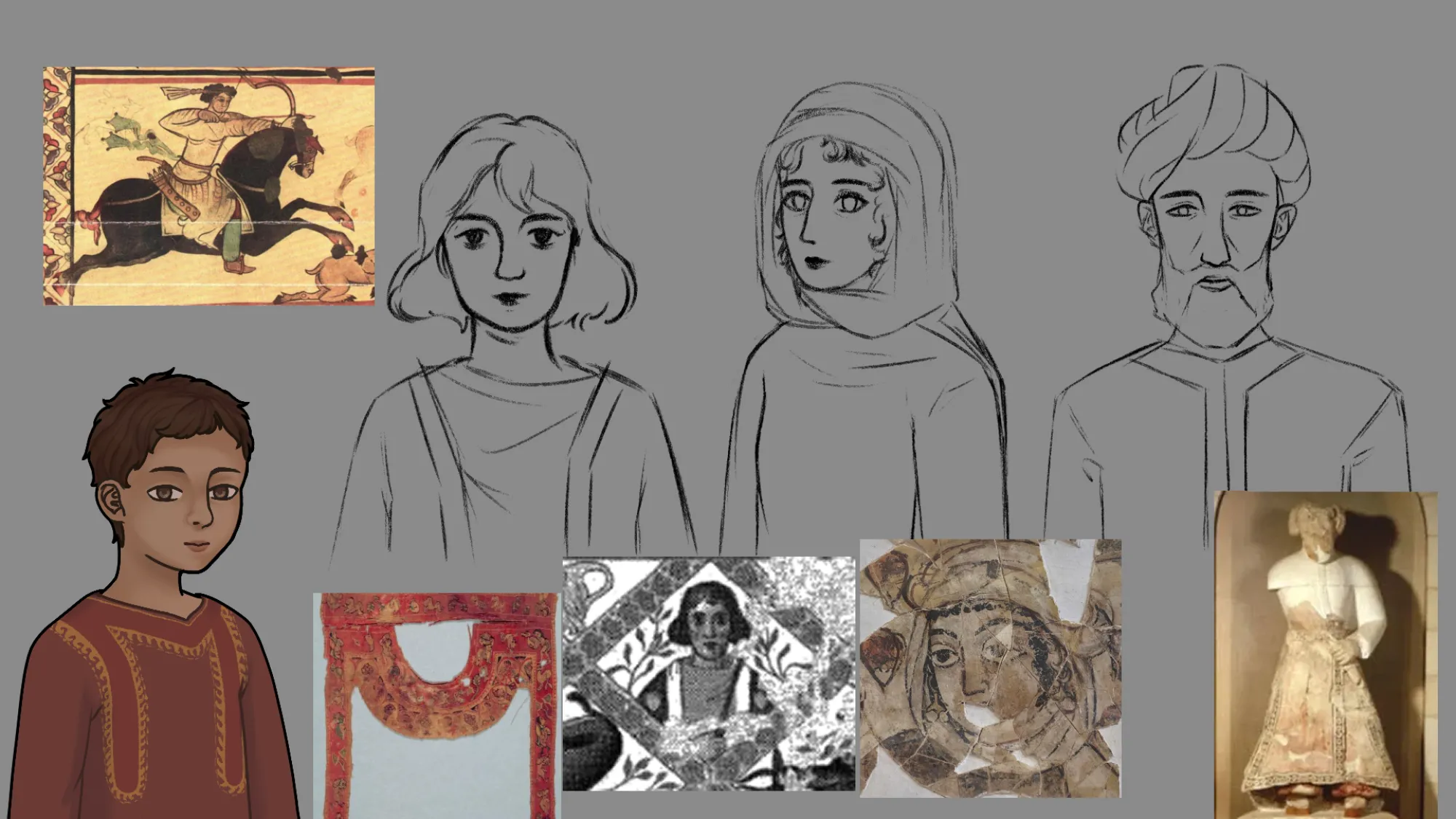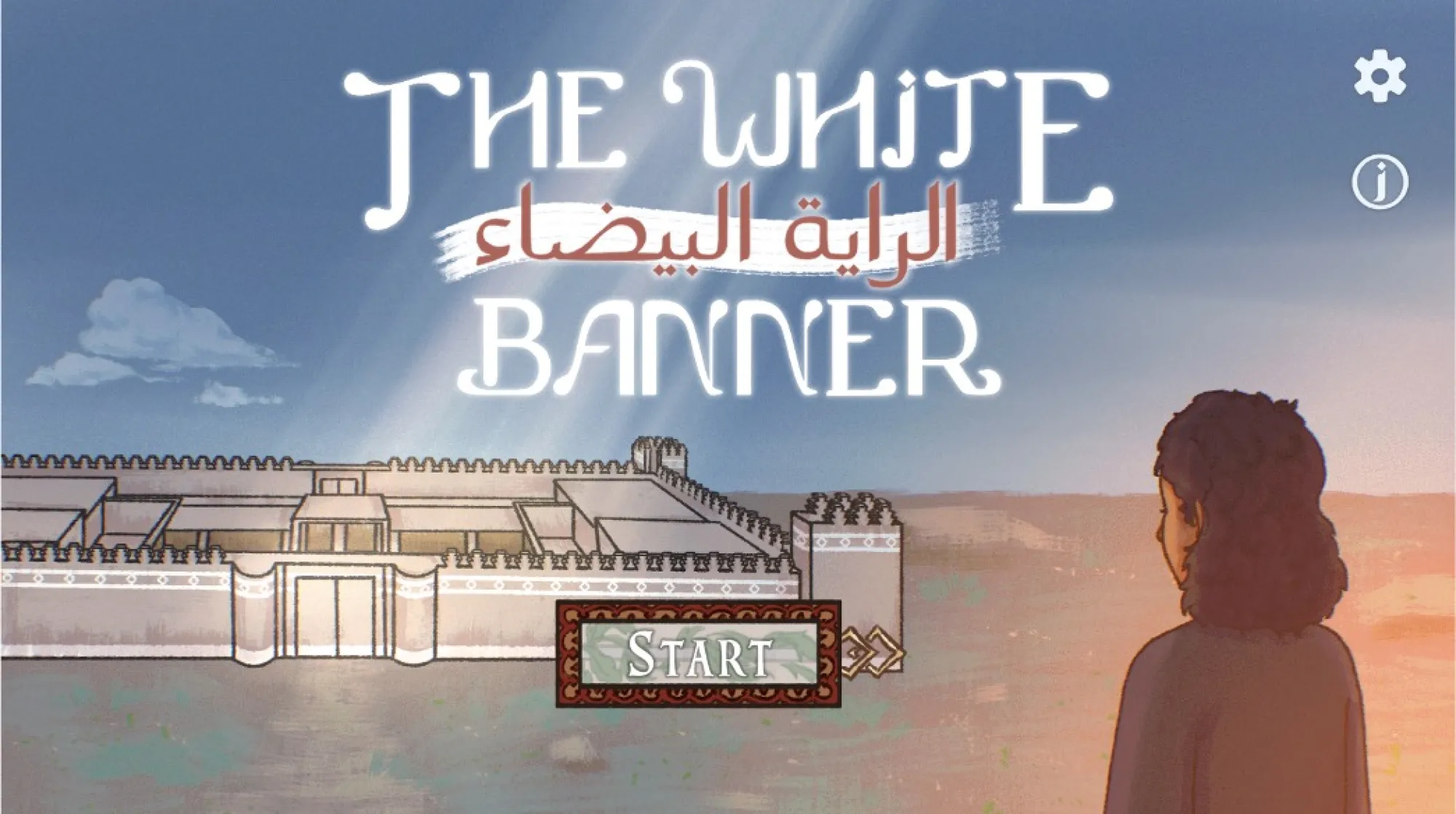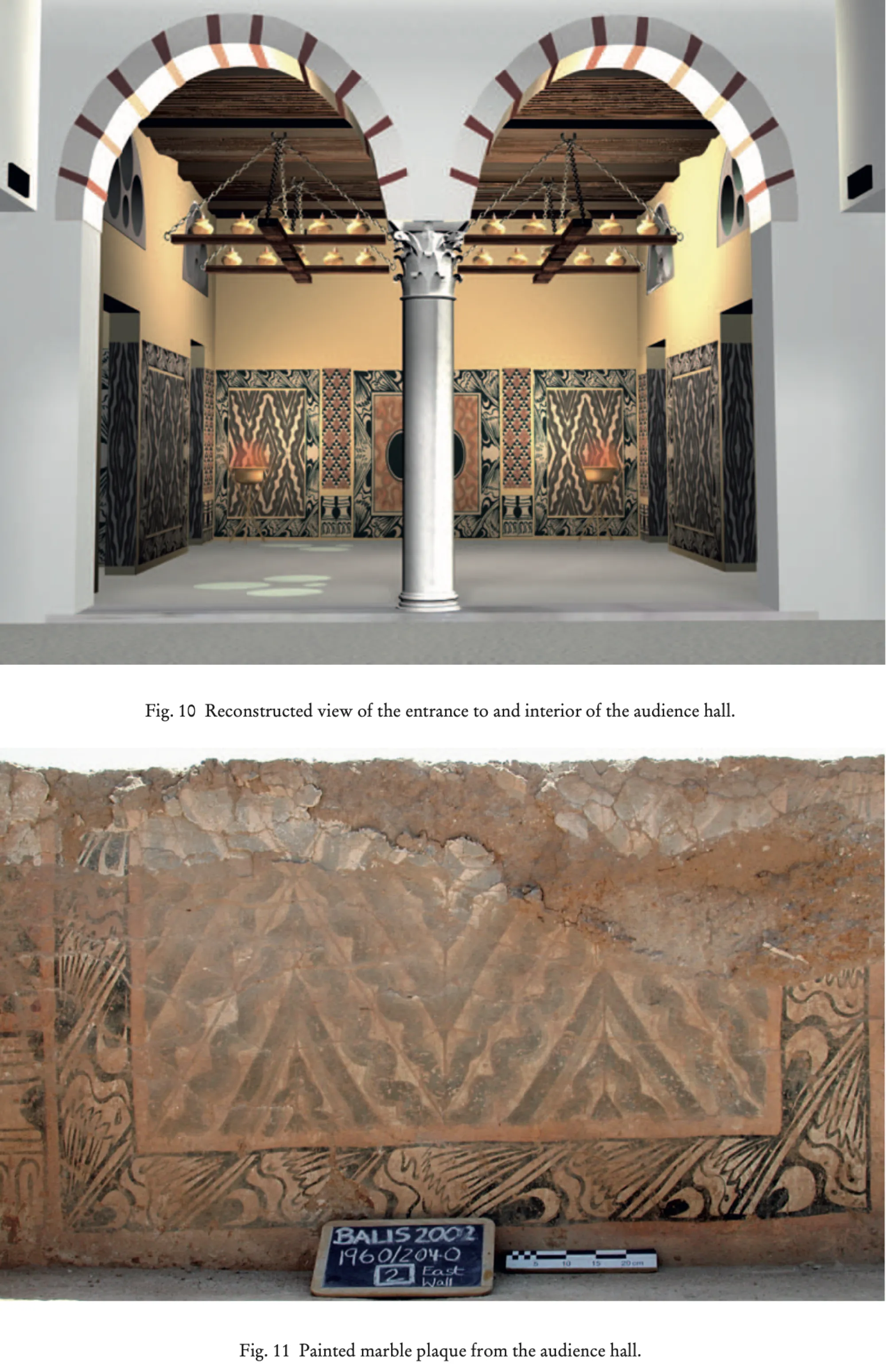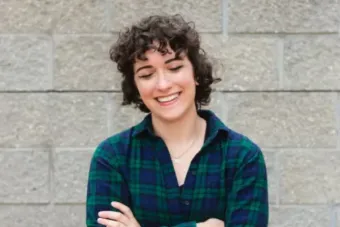Revisiting the Past Through Gaming
Professors in Art History, Design, AET look to explore historical sites through digital reconstruction

By Jennifer Irving
“How can we explore the past in an immersive and engaging way?” was the question Art History Associate Professor Stephennie Mulder found herself asking early last year as she assembled a multidisciplinary Syrian and UT Austin team to apply for the Bold Inquiry Incubator grant through UT’s Office of the Vice President for Research and Creative Endeavors.
Mulder is an Islamic art and architectural historian, who worked for over 10 years as the head ceramicist for the excavation at Balis, a medieval Islamic city in Syria. More recently, she participated in the excavation of the Qasr, an eighth-century Islamic palatial estate also in Syria. With a digital re-creation of the Qasr estate already created over a decade ago, Mulder decided upon an expansion not common in historical fields. Why not create a video game?
“I think the immersive quality of games is something that’s unique to gaming,” Mulder said. “This idea that you can be dropped into a world, and that world is one in which people, in fact, are eager to learn. I think as historians, in particular, we’re really missing an opportunity to teach if we’re not using gaming.”
Some 3 billion people around the world regularly play digital games, and gaming is a multibillion-dollar industry, with an annual revenue that surpasses that of the film industry four times over. An interest in historical accuracy is already a major motivation for many game players, as the blockbuster status of games like Assassin’s Creed makes clear. “Think of it this way,” Mulder said. “Gaming creates the possibility of having millions of students in your classroom.”
The Bold Inquiry grant requires the project to establish a research team across two or more disciplines, and with the idea of a game in mind, Mulder reached out to Syrian colleagues as well as faculty members in the Department of Design and the Department of Arts and Entertainment Technologies (AET). AET Associate Professor of Practice Jessie Contour and Design Associate Professor Kate Catterall helped her assemble a team of designers, artists and animators to build a demo. A group of Mulder’s colleagues in Syria also worked alongside the team at UT to create a digital space that was both creatively designed and factually accurate.
Gaming is a way to explore the past in an engaging and immersive way and if historians are part of that conversation, if art historians are part of that conversation, we can enrich people’s understanding of the past, and they learn to value it. - Stephennie Mulder
“Being collaborative and working together helps make the game feel textured and real and meaningful for local people, as well as helping people not from that region, not from Syria, learn about this history,” Mulder said.
Available in Arabic and English, the game was created to be played on mobile devices to make it accessible to the largest number of people in Syria and abroad.
Mulder, Contour and Catterall wrote the storyline together based on a narrative created by excavation director Thomas Leisten, and Catterall built out archaeological, mapping and illustration information in a digital collaborative workspace. From there, Contour assembled a team of undergraduate AET students to model and illustrate the story and create acoustic environments, supervising the technical aspects of the development of the demo.

The Bold Inquiry grant provided funding to compensate the student developers and gave them the opportunity to fully commit to a project outside of class. Mulder says that everyone working on the project was committed to diving deep, with students researching beyond what was required. Sound designer Seth Holton researched the history of Arab music to compose his own music for the game, working with a musician who played an oud (a precursor to the guitar, like a lute). Christine Chen, a 2D artist, and Hammad Naqui, a 3D artist, did research to create period-appropriate art, clothing, manipulable objects, and environments, and technical artist Cherry Hebert implemented their artwork in the final playable iteration of the demo to create a realistic and immersive eighth-century aesthetic world.
With a commitment to historical accuracy underpinning the project, the design team also wanted to focus on what makes a game successful at its core — a compelling story and engaging gameplay. This is how The White Banner was born.
The story begins in the present day and centers on the experience of Mulder’s Syrian colleagues who helped create the game. Players begin as the 10-year-old child Marwa meeting with her father outside the Qasr site in present day. Marwa is told by her father to no longer visit the site, which was destroyed by the militant Islamic State group (ISIS) in 2015, because the tragedy of the site has left it vulnerable to jinn.
“The jinn, or genies, are a staple of orientalist depictions of west Asia, but in fact an understanding of the jinn as being present in ruins is a key local heritage belief, and this element was suggested by our colleagues in Syria,” Mulder said.
“They’re actually an entire class of beings, much like angels or demons, and mentioned in the Quran. The jinn are interesting because unlike angels and demons, they don’t have an innate character of good or evil. They’re kind of like human beings,” Mulder said. “They could be good, they could be bad, they could be useful, they could be evil. They’re part of the unknown world, so they’re a little bit frightening as well. They’re also very powerful, and they’re described in the Quran as being beings of pure fire.”
Marwa inevitably returns to the site that evening against her father’s warning and finds a piece of white fabric sticking out. As she reaches to touch it, the fabric releases a jinni, who transports her back to 750 CE, the day of an important battle between the Umayyads and Abbasids, the first and second Islamic dynasties. Marwa finds herself as a member of the Umayyad family and is put in charge of hiding the white banner of the rebels as the rebellion is being planned.
She is free to move around the palace, exploring the digitally reconstructed rooms based on the excavation that took place between 1998 and 2010. As she searches for places to keep the banner safe, players are tasked with a quest to acquire knowledge in three different areas: trade and commerce, science and technology, and politics and strategy. As players talk to non-playable characters (NPCs) and acquire knowledge, the branches grow on the knowledge tree, an animation based on an eighth-century Lion Gazelle mosaic at Khirbat al-Mafjar in Jericho in the West Bank.

Bottom: This reference photo sows the colorfully painted plaster walls of the reception hall as excavated by the Syrian-American team.
One of the first NPCs Marwa runs into in the palace is a Jewish vizier, second in command to the Umayyad ruler, the caliph. Showing a character of a different religion so high up in the ranks of the dynasty was an important detail to the team.
“One of the things we wanted to do was show how richly textured the Islamic world was (and remains) in terms of religious groups, ethnicities and different types of people,” Mulder said. “These multicultural, multi-ethnic worlds are what really characterized every Islamic empire. You had Jewish communities, Christian communities. You had merchant communities that were bringing in goods from all over the world. I wanted that to come across very clearly in the game.”
The vizier NPC, who is also a scholar, introduces Marwa to an astrolabe, a scientifically advanced tool he’s using to see the alignment of the planets to astrologically calculate the best moment for the rebellion, as astrology often factored into decision-making during the medieval period. Interactions like this in the game are not only interesting for the players but also end up teaching them more than they may realize.
“First of all, she encounters the idea that a Jewish figure would be high up in the Umayyad administration. She encounters him as a learned, educated person who is a scientist, and she gains knowledge from him,” Mulder said. “She gains knowledge of science and technology from this encounter. But then she also has learned quite a lot, and the player’s learned quite a lot like ‘Oh, this world is a lot more complicated than I had realized.’”
As she explores the Qasr more, she gains new knowledge throughout different rooms, all of which are detailed re-creations of the palace, based on artifacts found during excavations and environments typical of the time from other sites. As they explore, players continue to learn about various subjects, such as military strategy and politics from court meetings as they enter the main hall. They can manipulate everyday objects in residential areas, learning about material culture of the time — rendered in incredibly accurate detail — while searching for a place to hide the banner.
For one of the last stops, players enter the bath house, where Marwa finds that the Umayyad general has just killed the Abbasid general, setting the rebellion into motion, meaning she no longer must hide the banner.
The design team was influenced and inspired by larger, blockbuster games like Assassin’s Creed, which Mulder says “takes its history very seriously.” The team hopes to grow the demo into a fully realized game that can be used both inside and outside of the classroom, a tool that serves as a jumping-off point for people to further explore Islamic history.
“Gaming is a way to explore the past in an engaging and immersive way,” Mulder said. “And if historians are part of that conversation, if art historians are part of that conversation, we can enrich people’s understanding of the past, and they learn to value it. We need more history. We need broader histories. We need more complex histories. Especially in the Islamic world, we just do not tell this really crucial history in enough detail.”
The White Banner is currently looking for funding to work with a local game developer to expand beyond the prototype funded by the original OVPR grant. This fall, the team plans to host a launch party where the public can play the game and provide feedback.
To Mulder, the greatest purpose of a game like this can be for people in Syria to have a positive story come out of the destruction of historical sites, and to do so in a way in which they are active agents in narrating their own history. It provides a place to connect to history and heritage in a way that’s not just about war and destruction.
“I feel like we have access to resources that can facilitate that here in COFA, so I see our working group as a facilitator for my colleagues and friends in Syria to hopefully begin to heal some of that loss and to begin to imagine a better future in some way,” Mulder says. “And it may seem, of course, one game is not going to achieve all of that, but I think many small actions like this over time can help people move forward after really traumatic experiences and the loss of important monuments.”
Meet the Team Behind The White Banner

Stephennie Mulder
Art History Associate Professor
Narrative Developer/Art History and Archaeology Specialist

Kate Catterall
Design Associate Professor
Design Specialist and Adviser

Jessie Contour
Arts and Entertainment Technologies (AET) Associate Professor of Practice
Game Development Team Lead
Nate (Cherry) Hebert
B.S., AET, 2024
Technical Artist and Developer
Hammad Naqui
AET student
3D Buildings/Props and Character Artist
Christine Chen
B.S., AET, 2024
2D Game and UI Artist and Animator
Seth Holton
AET student
Sound Designer and Voice Director
Reema Barakat
M.A., Middle Eastern Languages and Cultures, 2014
Voice Actor
Riyad Alhomsi
Middle Eastern Studies Assistant Professor of Practice
Voice Actor
Sari Andoni
Ph.D., Neuroscience, 2010
Musician
Issa David Aji
Music Theory graduate student
Musical Research Adviser
Amjad Shabat
Arabic translation
Font Assets by Apostrophic Labs, Steve Deffeyes, gluk, Arterfak Project, and Marc Lohner on DaFont
Additional Environment Assets by YadroGames, aprodnuk, and evolveduk on Sketchfab; and DesignWonderwalls on TurboSquid
Additional Texture Patterns provided by rawpixel.com on Freepik, Freepik on Freepik.com, and by maxivillus on Freepik
Unity Arabic Support by Abdullah Konash on Unity AssetStore

